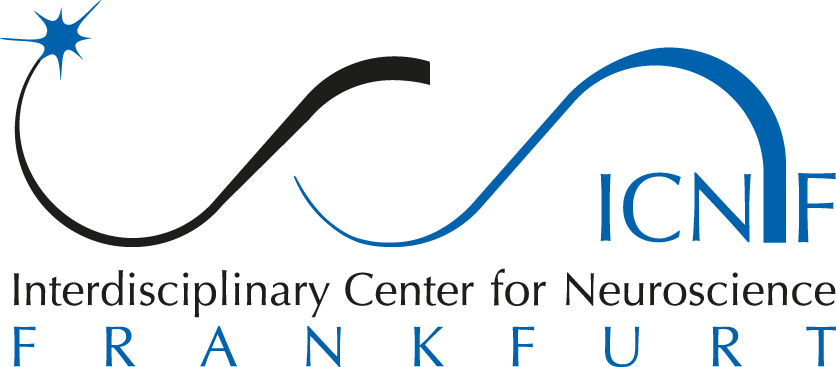
Prof. Dr. rer. nat. Jörg Stehle
Dr. Senckenbergische Anatomie
Institute of Anatomy III
Cellular and Molecular Anatomy
Theodor-Stern-Kai 7
D-60590 Frankfurt/ Main
Tel ++49 (0)69-6301-6905/6904
Fax ++49 (0)69-6301-6920
E-Mail: stehle@em.uni-frankfurt.de
Scientific Focus
Our research group tries to elucidate the molecular mechanisms of time measurement in different mammalian cells. As a central aspect we wish to decipher the cellular coding and decoding of information on time, achieved via transcriptional regulation in neurons and neuroendocrine cells. Investigations of stimulus-response couplings are conducted not only in the pineal gland, as a classical model system, but also in the hypothalamic suprachiasmatic nucleus, the site of the endogenous master clock, as well as in the pars tuberalis of the pituitary, as a ‘window’ of the brain, and in the hippocampus, as a model for memory consolidation. Experiments are focussed on the stimulus-induced plasticity of the cAMP signalling pathway, mediated by its transcription factors CREB and ICER, and on the role of products of the so-called clock genes.
Currently our research group focuses its scientific investigations on two main topics:
– Following the detection that the rhythmic expression of the clock gene Period1 is due to a heterologous sensitization mechanism for the neuromodulator adenosine through the neurohormone melatonin (von Gall et al. (2002) Nature Neuroscience 5:234), we now investigate the role of other clock genes in this structure, which are known to be necessary for oscillatory phenomena (Jilg et al., (2006) Eur J Neurosci 22:2845-2854). Besides analyzing the temporal dynamics and induction mechanisms for clock genes in the pars tuberalis we furthermore wish to decipher the nature of relay molecules between the pars tuberalis, as a time-decoding structure, and the anterior pituitary.
– The recently detected presence of clock genes and their protein products in the mouse hippocampus opens the fascinating perspective that these transcription factors are involved in neuronal plasticity.
Methods
– system biology , using behavioural analyses in the intact animal
– immunhistochemistry, immunoblot
– organotypic cell and tissue cultures
– peptide isolation
– biochemical characterization of hormones
– PCR, RT-PCR, real-time-PCR
Selected Publications
Maronde E, Pfeffer M, Olcese J, Molina CM, Schlotter F, Dehghani F, Korf HW & Stehle JH (1999) Transcription factors in neuroendocrine regulation: rhythmic changes in phosphoCREB and ICER levels frame melatonin synthesis J Neurosci19:3326-3336
Pfeffer M, Maronde M, Molina CA, Korf HW & Stehle JH (1999) Inducibility of ICER protein in rat pinealocytes: a highly sensitive natural reporter for regulated gene transcription. Mol Pharmacol 56:279-289
von Gall C, Lewy A, Schomerus C, Vivien-Roels B, Pevét P, Korf HW & Stehle JH (2000) Transcription factor dynamics and neuroendocrine signalling in the mouse pineal gland: a comparative analysis between melatonin `knockdown` C57BL mice and melatonin-proficient C3H mice. Eur J Neurosci 12:964-972
Von Gall C, Schneider-Hüther I, Pfeffer M, Dehghani F, Korf HW & Stehle JH (2001) Clock gene protein mPER1 is rhythmically synthesised and under cAMP control in the mouse pineal gland. J Neuroendocrinol 13:313-316
Von Gall C, Garabette ML, Frenzel S, Kell CA, Dehghani F, Schumm-Draeger PM, Weaver DR, Korf HW, Hastings MH & Stehle JH (2002). Rhythmic gene expression in mouse pituitary depends on heterologous sensitisation by the neurohormone melatonin. Nature Neuroscience 5:234-238
Karolczak M, Burbach GJ, Sties G, Korf HW, Stehle JH (2004) Clock gene mRNA and protein rhythms in the pineal gland of mice. Eur J Neurosci 12:3382-3388
Kell CA, Dehghani F, Wicht H, Molina CA, Korf HW, Stehle JH (2004) Distribution of transcription factor inducible cyclicAMP early repressor (ICER) in rodent brain and pituitary. J Comp Neurol 478:379-394
Jilg A, Moek J, Weaver DR, Korf HW, Stehle JH, von Gall C (2005) Rhythms in clock proteins in the mouse pars tuberalis depend on MT1 melatonin receptor signaling. Eur J Neurosci 22:2845-2854
Ackermann K, Bux R, Rub U, Korf HW, Kauert G, Stehle JH. (2006) Characterization of human melatonin synthesis using autoptic pineal tissue. Endocrinology 147:3235-3242
